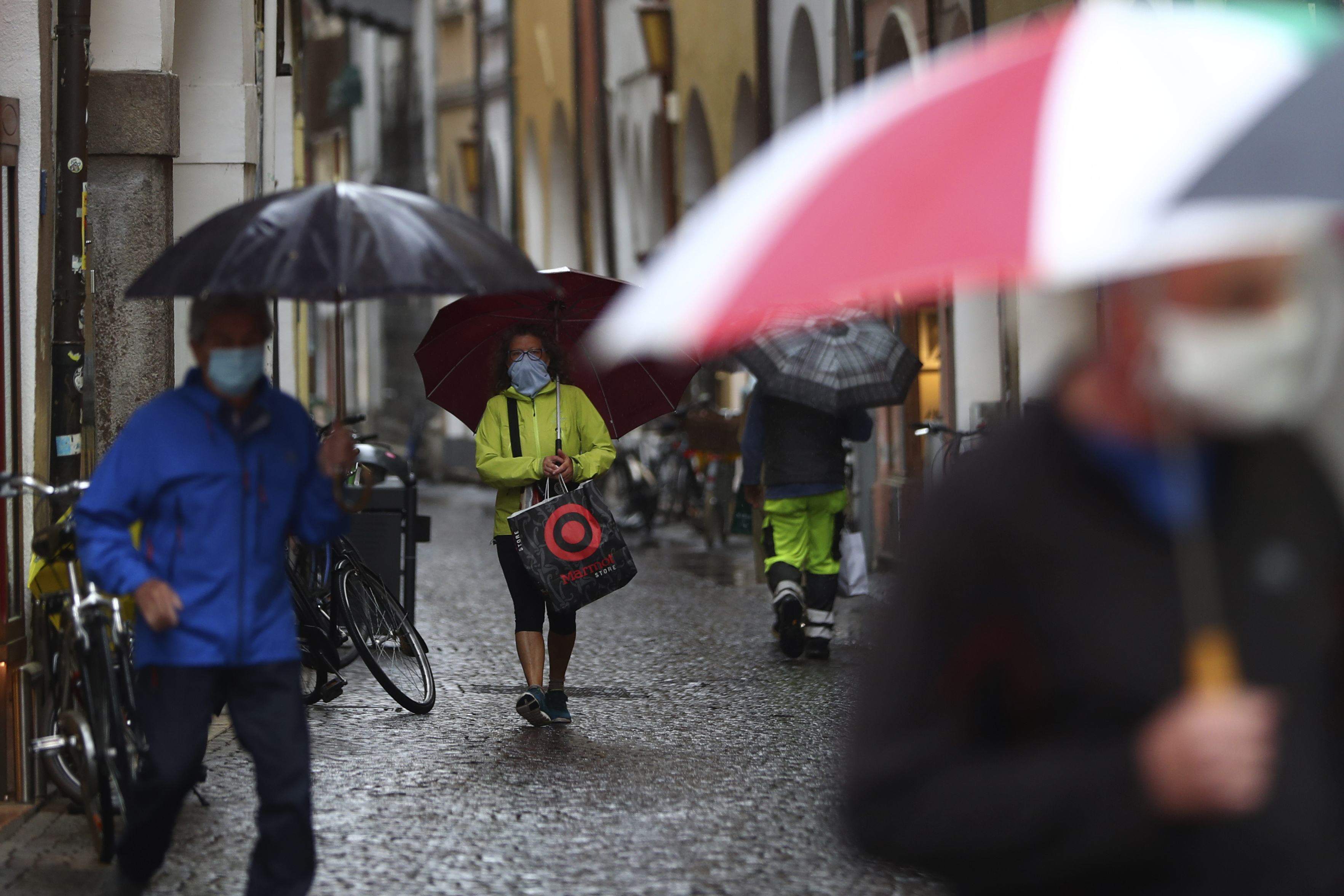When Morena Colombi tested negative for the coronavirus on March 16, the official tallies counted her among the Covid-19 recoveries, a success amid the tragedies overwhelming Italy. But she was nowhere near recovered, her cough and crippling fatigue nowhere near gone.
Five weeks later, on April 21, she returned to her job developing colours for a cosmetics company, but with shortness of breath and aching muscles, she found herself unable to take even short walks. Another test confirmed that she was no longer infected. But 11 weeks after testing positive, on the same day Italy first quarantined towns, she is still not back to normal.
“It takes a long time,” said Colombi, 59, who lives in Truccazzano, outside the northern city of Milan. “I can’t get back into my natural rhythms.”
Italy was the first European country to be hit hard by the pandemic — its intensive care units inundated and its elderly dying in droves before the tsunami reached Spain, France, the US or Britain. And so Italy is also ahead in coming to grips with
the long duration of the illness and the lasting consequences for some survivors.
Many Italians have grown painfully familiar with the way the infection can hang on for weeks, the symptoms can linger for weeks more, and full recovery can take longer still — if it ever arrives. Of the more than 218,000 people in Italy who have tested positive, more than 30,000 have died and the government lists more than 103,000 as recovered.
The stubbornness of the virus and the length of the convalescence have become topics of conversation in northern Italy where some of the longest-suffering Italians are finding themselves in physical and financial uncertainty, unable to shake sickness and fatigue and get back to work.
Their experience may also be instructive to other nations as struggling to get their economies moving again.
“We have seen many cases in which people take a long, long time to recover,” said Alessandro Venturi, the director of the San Matteo hospital in the Lombardy town of Pavia, adding that the discomfort often seems to last even longer for people with lighter symptoms. “It’s not the sickness that lasts for 60 days, it is the convalescence,” he said. “It’s a very long convalescence.”
Most people who catch the virus have few symptoms or none, but some get very sick, most often with pneumonia. Any pneumonia damages the lungs, which can take months to heal, and doctors warn that the harm might not be completely reversible.
Studies also point to kidney, heart, liver and neurological damage, often from secondary infections, and no one knows what the long-term prospects are for those patients.
But even some of the infected who have avoided pneumonia describe a maddeningly persistent and unpredictable illness, with unexpected symptoms. Bones feel broken. The senses dull. Stomachs are constantly upset. There are good days and then bad days without apparent rhyme nor reason.
The afflicted find the simplest tasks taxing. Testing is still mostly reserved for the hospitalised, and so people suffering less severe but stubborn symptoms are trailed by doubt about whether they have the virus.
Dr Annalisa Malara, an intensive care physician in Codogno, southeast of Milan, who diagnosed Italy’s first case of the outbreak in February, said there was still no clear understanding of why the virus and its effects lingered so long.
“Lack of energy and the sensation of broken bones” are common, she said, adding that fatigue often lingered “even after the more intense symptoms are gone.”
In the north of Italy, the epicentre of the contagion in that country, a partial lifting of the lockdown this month has allowed more family and friends to compare notes on their experiences.
“It never finishes,” said Martina Sorlini, a 29-year-old math and physics high school teacher who has been running a low-grade fever since the beginning of March. She said that the cough and sore throat eventually went away, and that after three weeks she got her sense of taste and smell back, and even found enough energy to tend vegetables in her garden.
Then came stomach aches, fatigue and the return of fever. And it hasn’t left, making it extremely tiring to teach her online high school classes.
“I was convinced that I was better. They don’t know what happened,” Ms. Sorlini said. “They are seeing everything for the first time too.”
Edmondo Cirielli, an MP with the Right-wing Brotherhood of Italy party, has argued that the health ministry should pay more attention to cases like his.
On the weekend of March 7, Cirielli ran a fever and suffered cold-like symptoms, and became convinced he had picked up the virus by touching an infected surface in the parliament chamber. He tested positive that week.
Almost immediately, he said, his fever and cough faded, and he thought he would be fine. Then he had what he called a “small respiratory crisis” that put him in the hospital.
But he had no pneumonia, so he went home to self-quarantine. There, he suffered debilitating fatigue, sore throat, diarrhoea and intense pain at the base of his neck that made it impossible to concentrate.
“One day I was fine, the next bad. There was no building to a peak and then coming back down. It was up and down for a month,” he said.
Then things got stranger.
After 40 days of feeling lousy, he tested negative for the virus, but his eyes still burned and bouts of diarrhoea continued, he said. At the end of the month, he finally felt better, but another test result came back positive, forcing him to spend weeks more in isolation, where he kept busy watching Versailles on Netflix.











